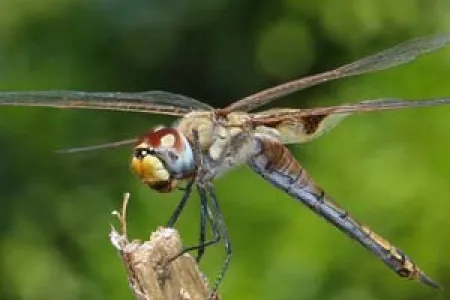Citizen scientists help solve dragonfly mystery
Hundreds of citizen scientists have recorded and photographed more than 1200 dragonflies in a project that has assisted a Charles Darwin University dragonfly expert to understand more about the colourful insects found across Northern Territory skies.
Aquatic ecologist and head of the School of Environment Professor Jenny Davis said that there was a lot of interest in dragonflies in Darwin not only as a distinctive part of the tropical biodiversity, but also as an indicator heralding the end of the wet season.
“Top Enders will tell you that the appearance of large numbers of dragonflies heralds the end of the wet season,” Professor Davis said. “However, we had little scientific data to support this theory.”
She said the aim of the project was to get the community involved in helping to understand more about dragonflies including where they are found and in what numbers they appear.
“More than 220 people from across the Top End, from Wadeye to Elcho Island, participated in the project, which ran from April to July, with 2265 images submitted,” she said.
“A total of 1202 dragonflies representing 33 species and 268 damselflies representing 12 species were recorded across the Top End during the project.”
The work provided the first quantitative dataset on the change in dragonfly and damselfly numbers in the Top End during the transition from wet season to dry season.
“The results indicate that the visible presence of large numbers of dragonflies do herald the end of the wet season,” she said. “However, not all species of dragonflies are equal in this respect.”
She said it was the large gliding species, such as the common glider (Tramea loewii), coastal glider (Macrodiplax cora), and the graphic flutterer (Rhyothemis graphiptera) that formed large and very visible flocks, particularly near the coast in April.
“The gliders are more conspicuous,” she said. “In contrast, other species such as the painted grasshawk (Neurothemis stigmatizans), which usually stay close to vegetation, became more dominant as the months progressed.”
Professor Davis said the results provided information on the location of dragonfly and damselfly “hotspots”.
“In addition to the image, which provided a visual record of the dragonfly or damselfly, participants were asked to provide the location where the photo was taken and the date,” Professor Davis said.
The results will also contribute to the free app, “Identifly - a guide to the dragonflies and damselflies of the Top End”. For more information visit W: facebook.com/IdentiflyApp/ . ENDS
